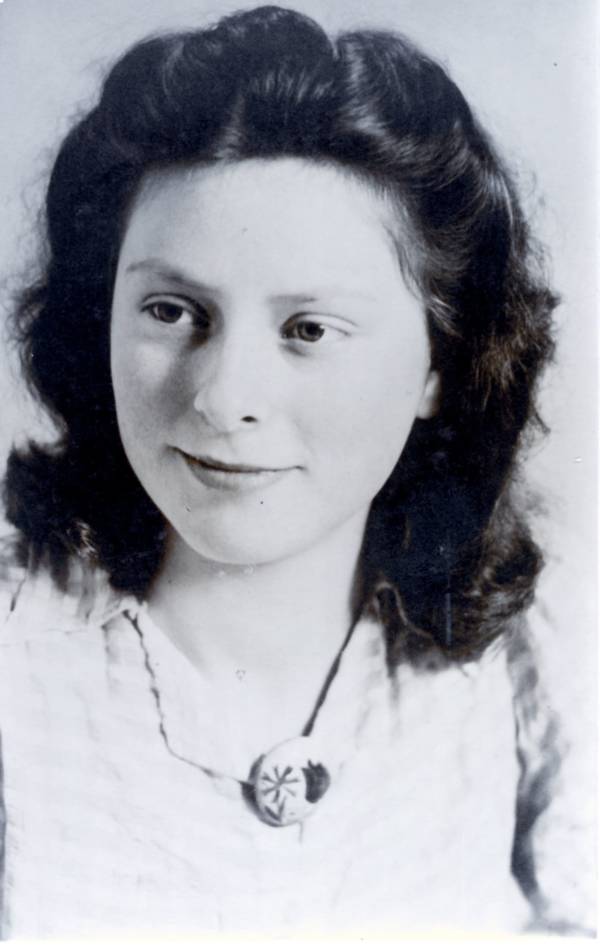When she was just 14-years-old, Freddie Oversteegen joined the resistance and fought against the Nazis in World War II.

National Hannie Schaft Foundation
The world has lost an integral member of the Dutch resistance against the Nazis during World War II, the legendary Freddie Oversteegen.
On Sept. 5, a day before her 93rd birthday, Oversteegen passed away. As a teenager, she fought alongside her sister Truus to bring Nazis and Dutch traitors to justice, with her age and feminity as weapons.
Joining The Resistance
Oversteegen’s family gave whatever they could to help throughout WWII, despite their own misfortunes, she explained in a 2016 interview with Vice Netherlands.
Oversteegen’s mother took her and her sister away from their father when she was a child. They shared a small apartment where they slept on straw mattresses on the floor. But the family still opened up their home to those in need of refuge and hid them from the Nazis.

National Hannie Schaft FoundationFreddie Oversteegen as a teenager.
Oversteegen recalled that a Jewish couple lived with the family for a time and they initially told her and her sister about the war. So when a man knocked on their door asking for the two girls to join the resistance, they did.
No one expected young girls to be resistance fighters, which made them the perfect agents to fight the Nazis.
Freddie Oversteegen’s Kiss Of Death
Alongside her sister and a young girl named Hannie Schaft, Oversteegen took down bridges and rail lines with dynamite, shot at Nazis and disguised herself to help smuggle Jewish children across the country, according to The Washington Post.
One of the most dangerous, and boldest, tasks the girls carried out was the seduction of their Nazi targets. They would meet them inside of a bar and then lure them into the woods where they could eliminate them. In 2016, Oversteegen described once such incident to Vice Netherlands:
“Truus had met him in an expensive bar, seduced him, and then took him for a walk in the woods. She was like: ‘Want to go for a stroll?’ And of course, he wanted to. Then they ran into someone – which was made to seem a coincidence, but he was one of ours – and that friend said to Truus: ‘Girl, you know you’re not supposed to be here.’ They apologized, turned around, and walked away. And then shots were fired, so that man never knew what hit him.”

Remi DekkerFreddie Oversteegen in the spring of 1945.
However, the resistance took a toll on the sisters emotionally. In an interview with Ellis Jonker for the 2014 book Under Fire: Women and World War II, Truus recalled her and her sister’s reactions to their first kills:
“It was tragic and very difficult and we cried about it afterwards,” she said. “We did not feel it suited us – it never suits anybody, unless they are real criminals … One loses everything. It poisons the beautiful things in life.”
According to The Washington Post, Oversteegen described the killings as an obligation.
“We had to do it,” she said. “It was a necessary evil, killing those who betrayed the good people.”
In the same interview, when asked how many murders she was involved in, Oversteegen simply replied, “One should not ask a soldier any of that.”
Her Legacy

Vice NetherlandsFreddie Oversteegen in 2016.
Hannie Schaft was captured and killed by the Nazis just before the end of the war and later became an icon of female resistance. Her story was told on the silver screen in 1981’s “The Girl With the Red Hair,” which took its name from Schaft’s signature fiery locks.
After the war, Truus worked as an artist and wrote a popular memoir titled Not Then, Not Now, Not Ever. According to The Washington Post, Truus died in 2016 just two years after she and her sister were given the Mobilization War Cross, an honor for their service in the war, by the Netherlands’ Prime Minister.
Oversteegen stayed out of the limelight, got married, and had three children. She admitted to Vice Netherlands that sometimes she felt overshadowed by her sister and Schaft.
“I have always been a little bit jealous of her because she got so much attention after the war,” she said. “But then I’d just think, ‘I was in the resistance as well.'”
Oversteegen was a remarkable woman, and even though she is gone, the stories of her bravery and resistance to Nazi injustices will live on forever.
Next, meet Lepa Radić, the badass teenager that died fighting Nazis. Then check out these 31 photos of the French resistance in action.





